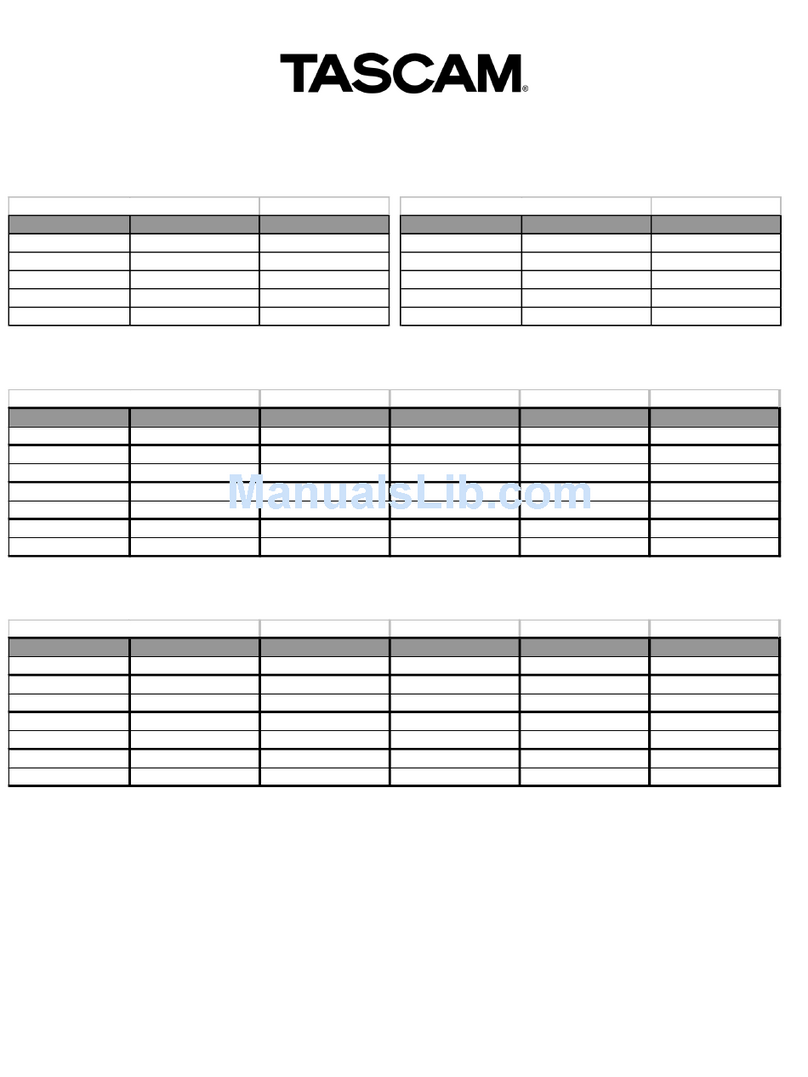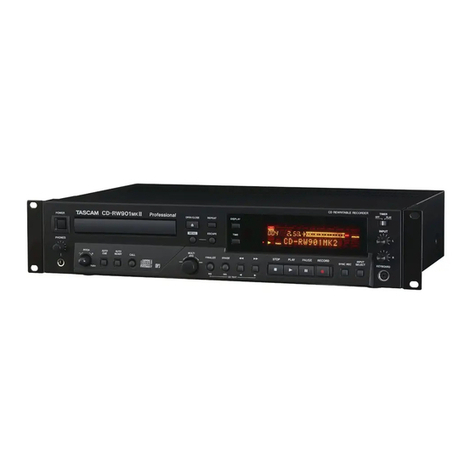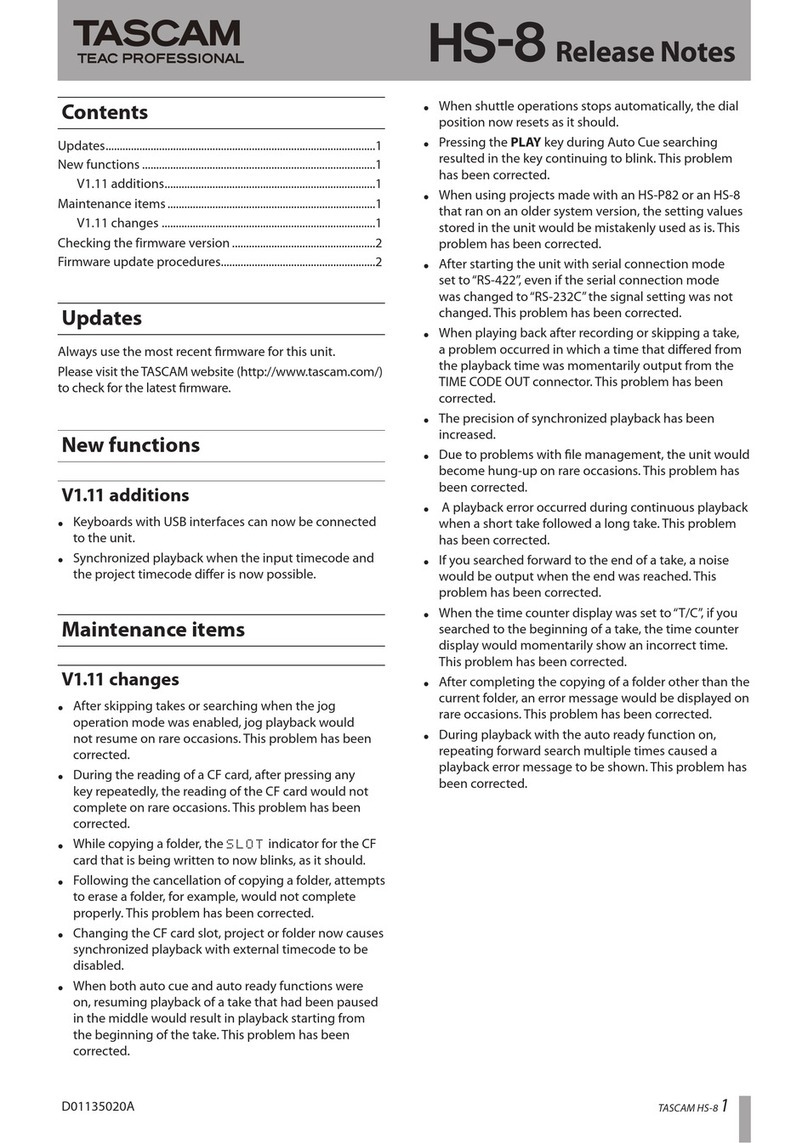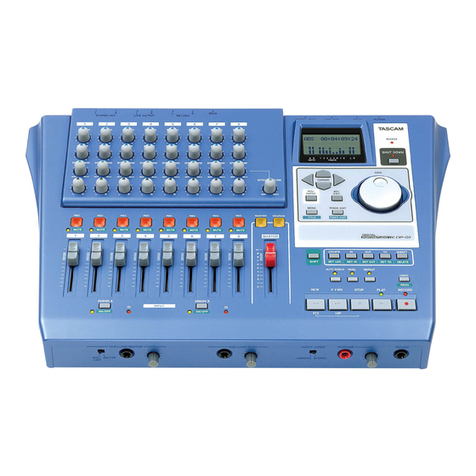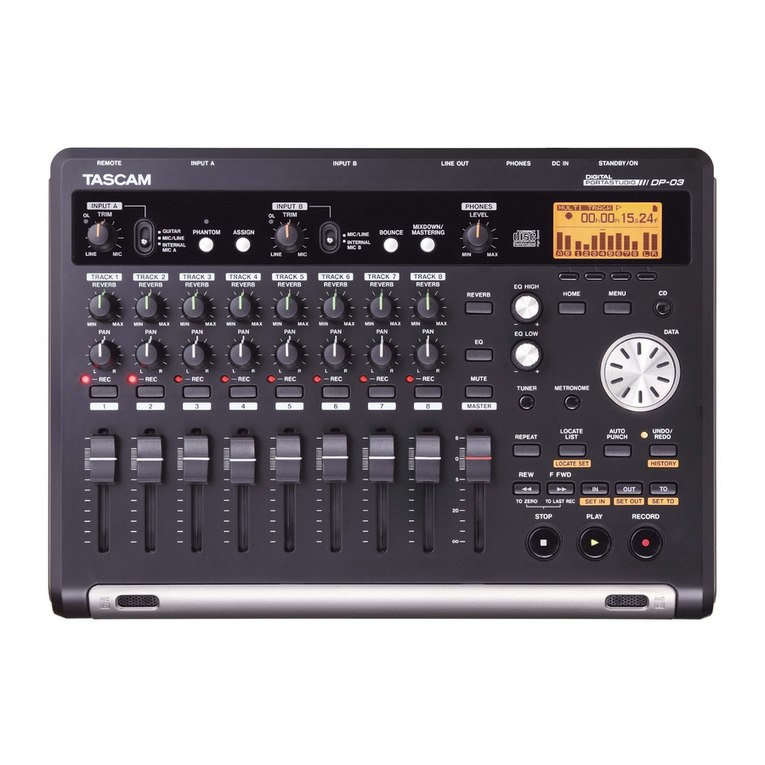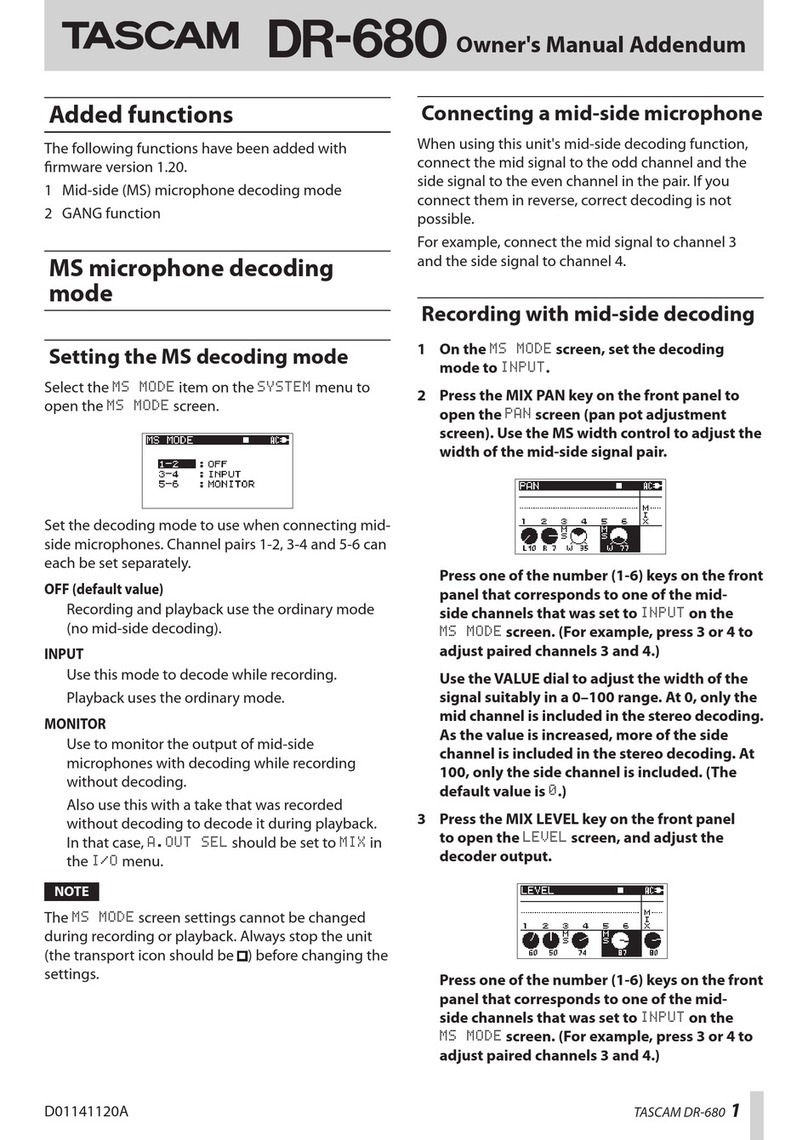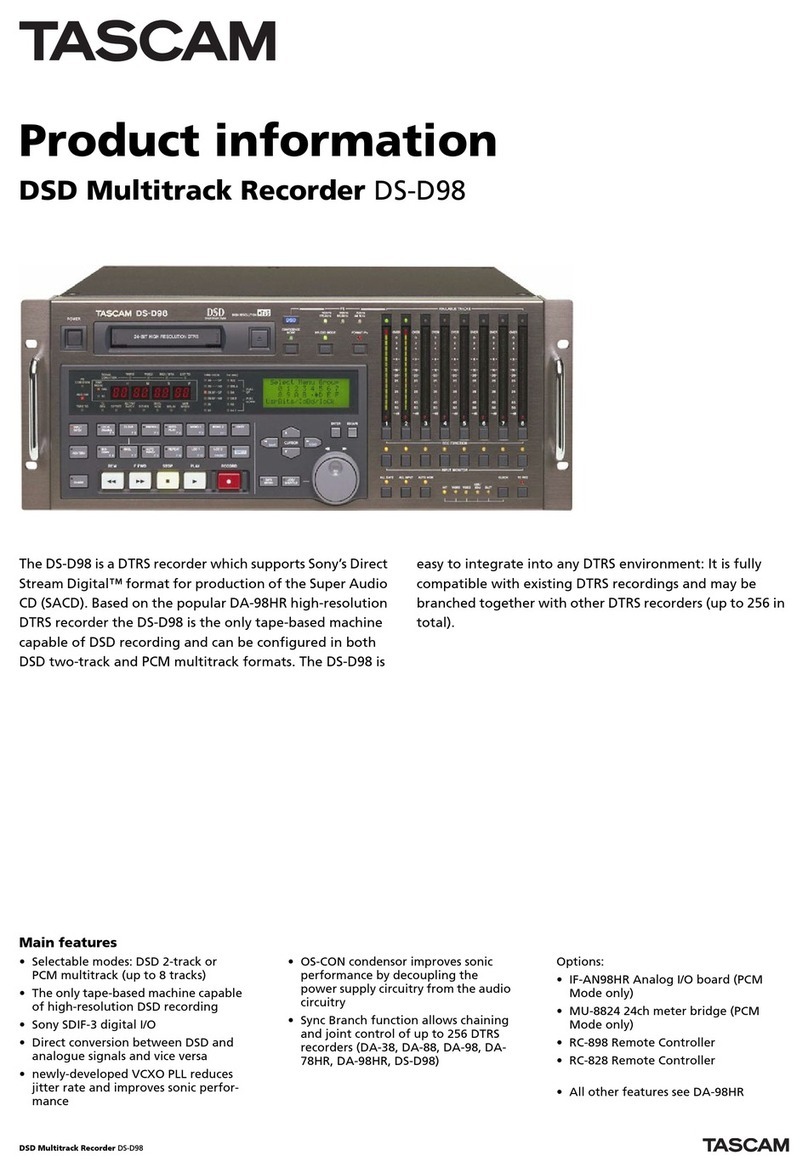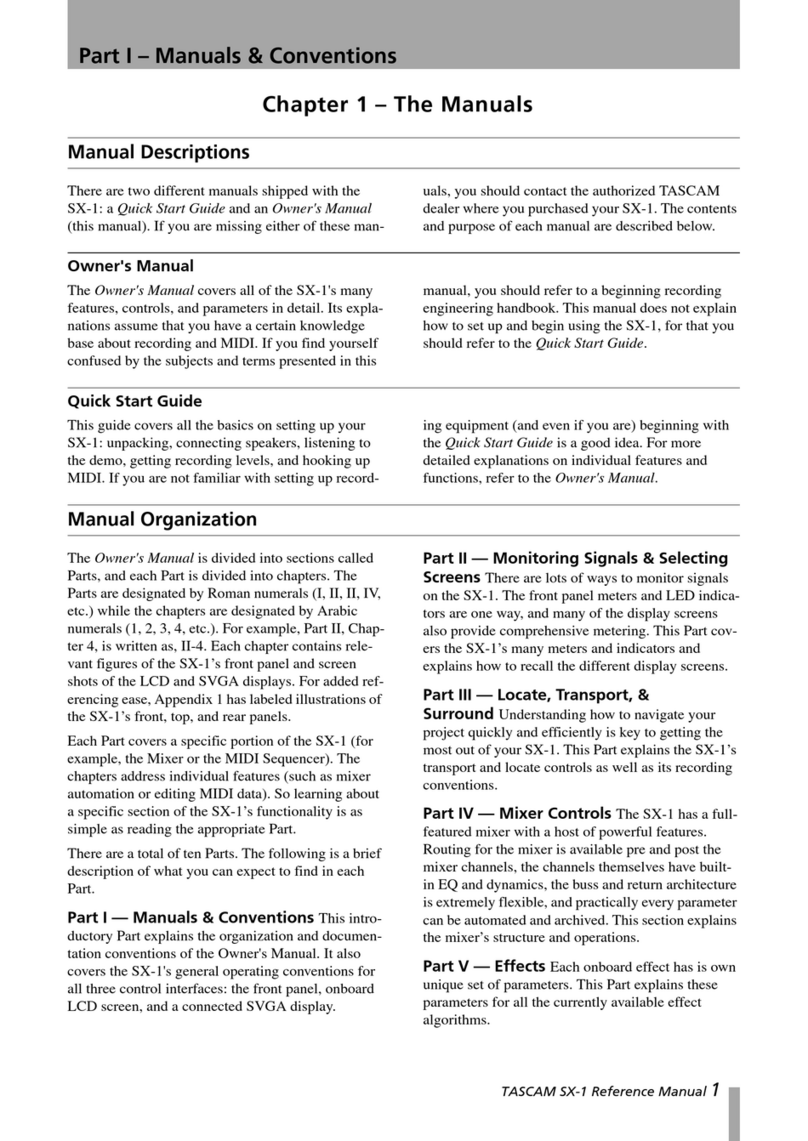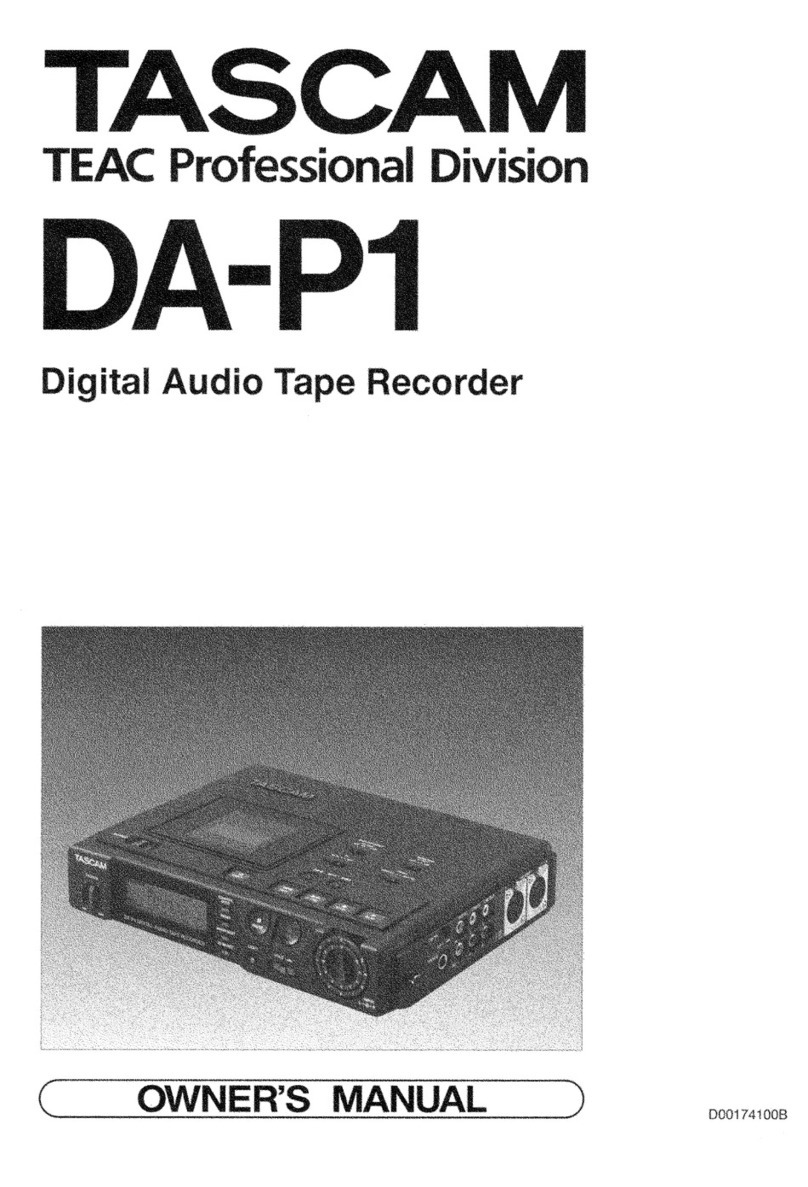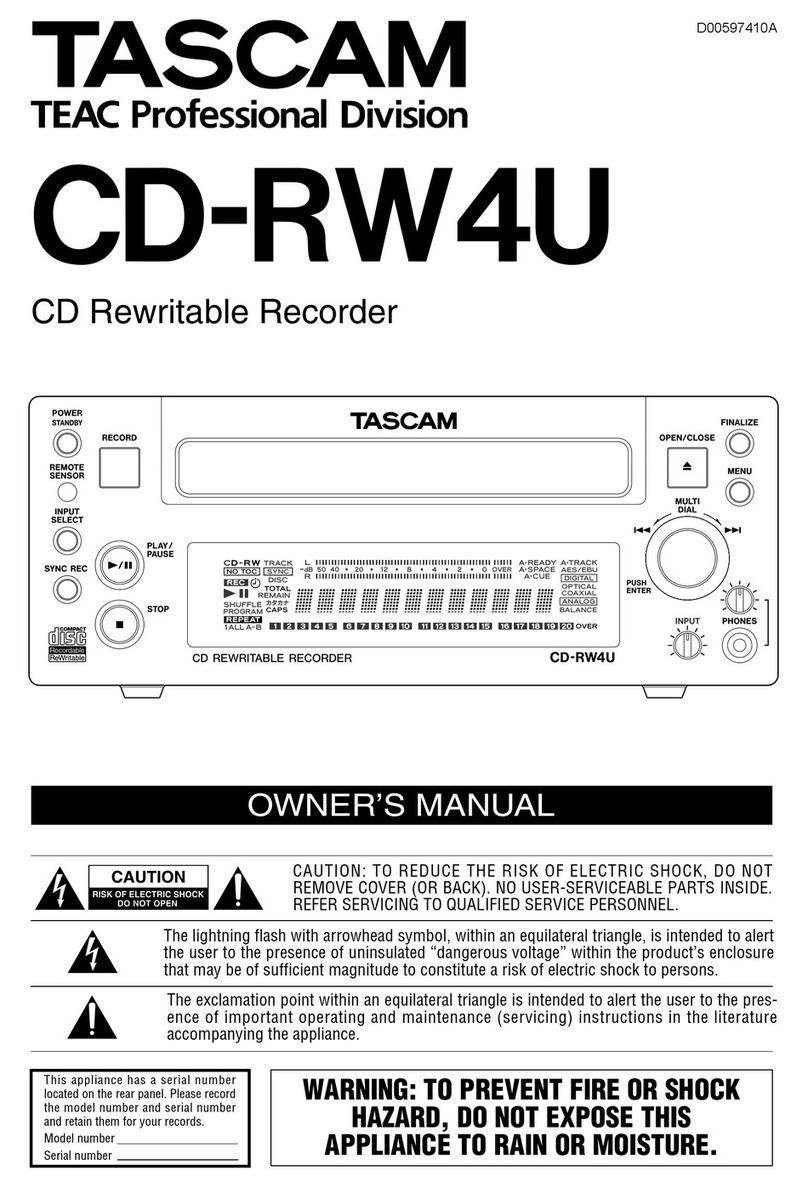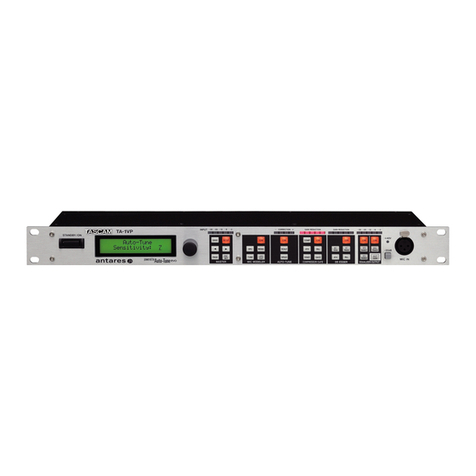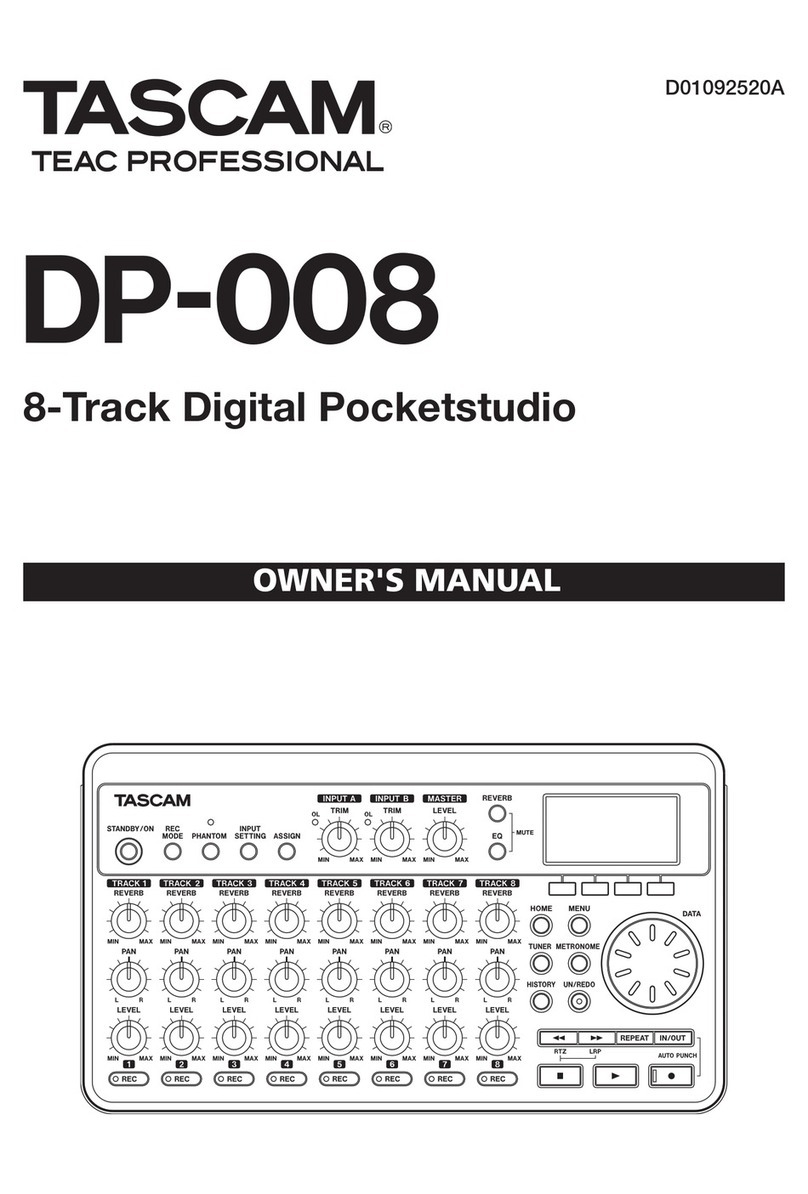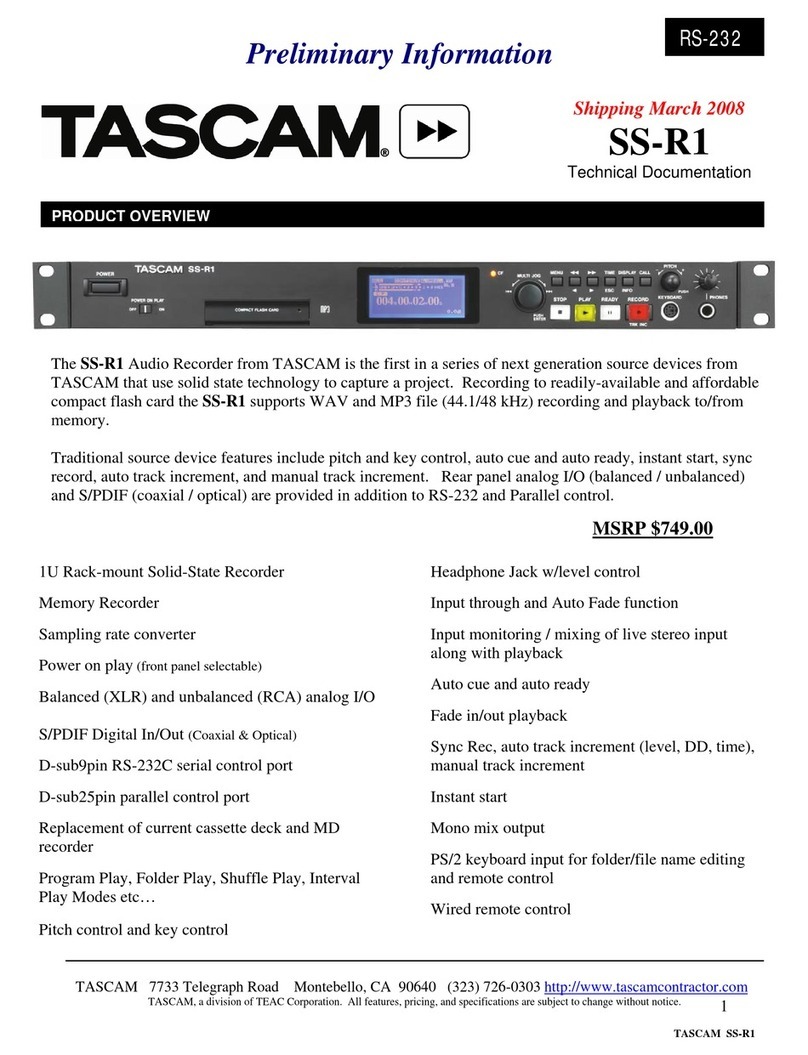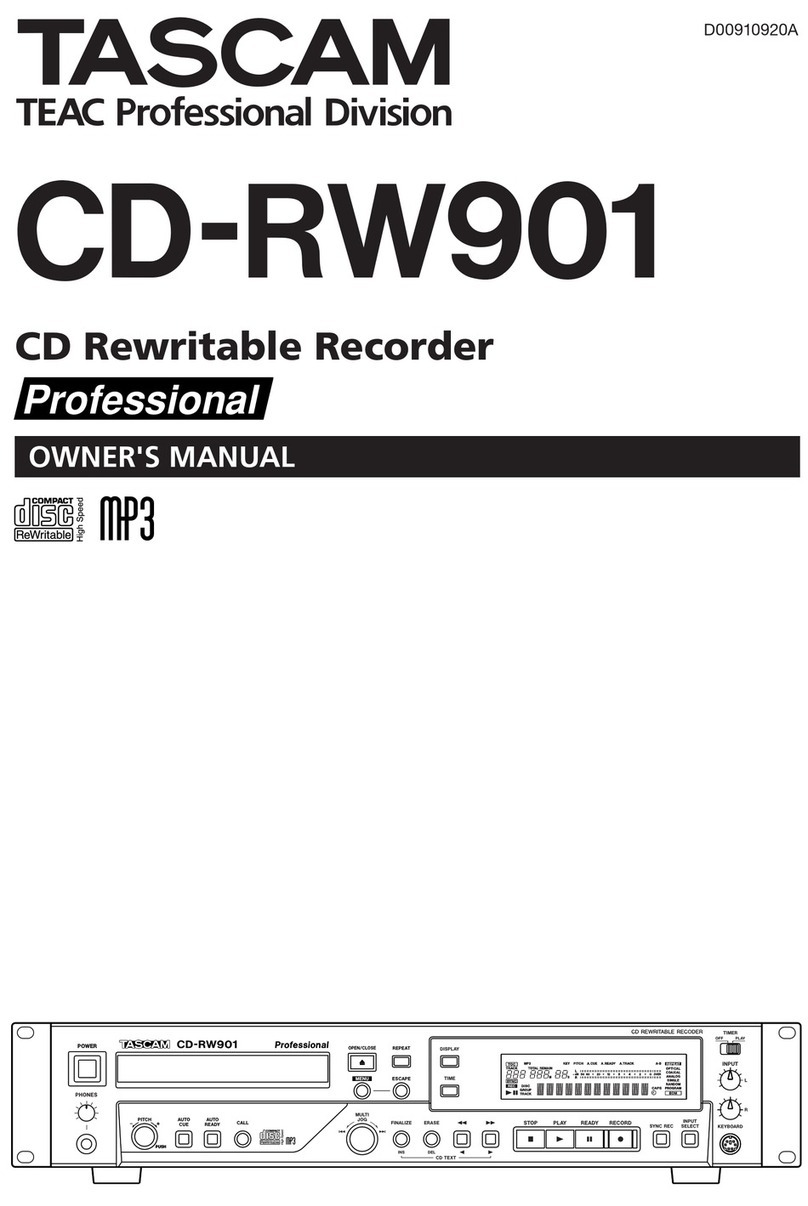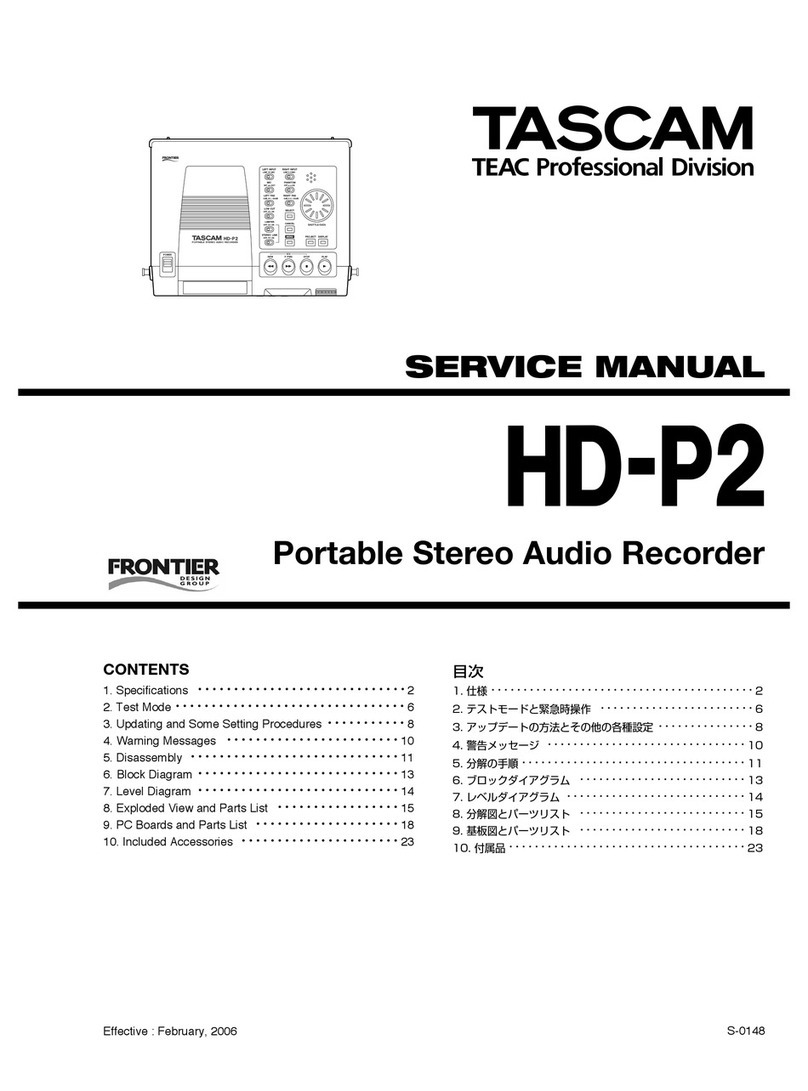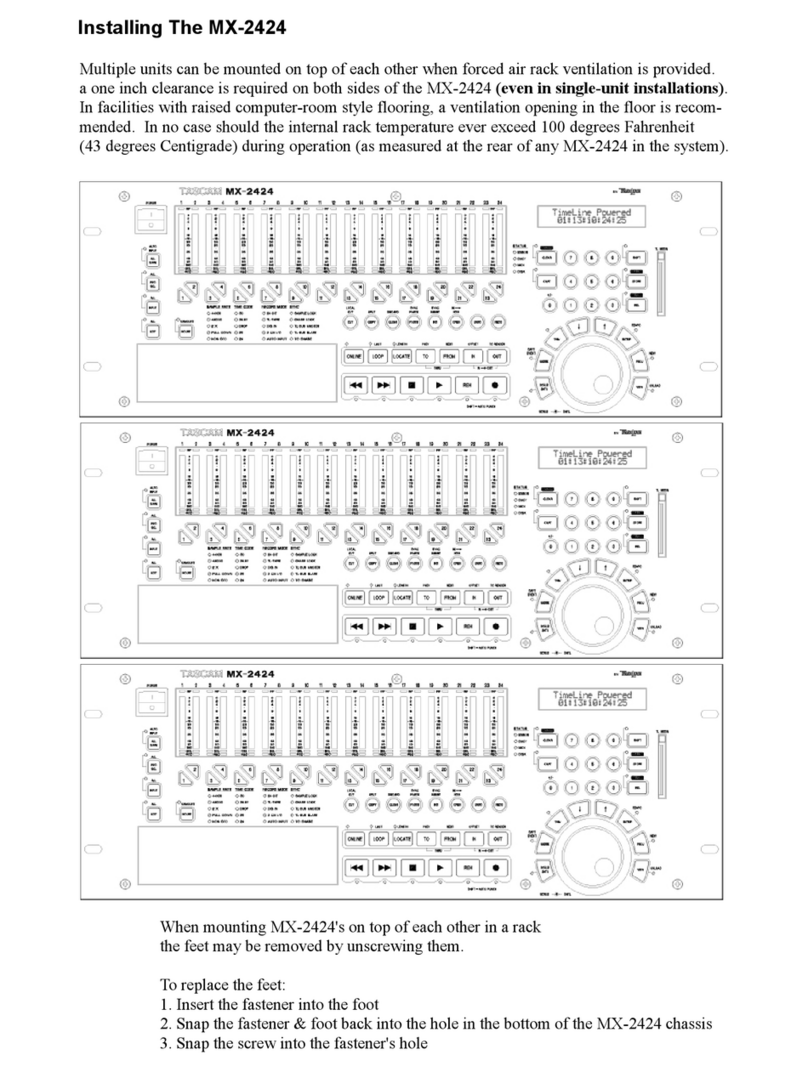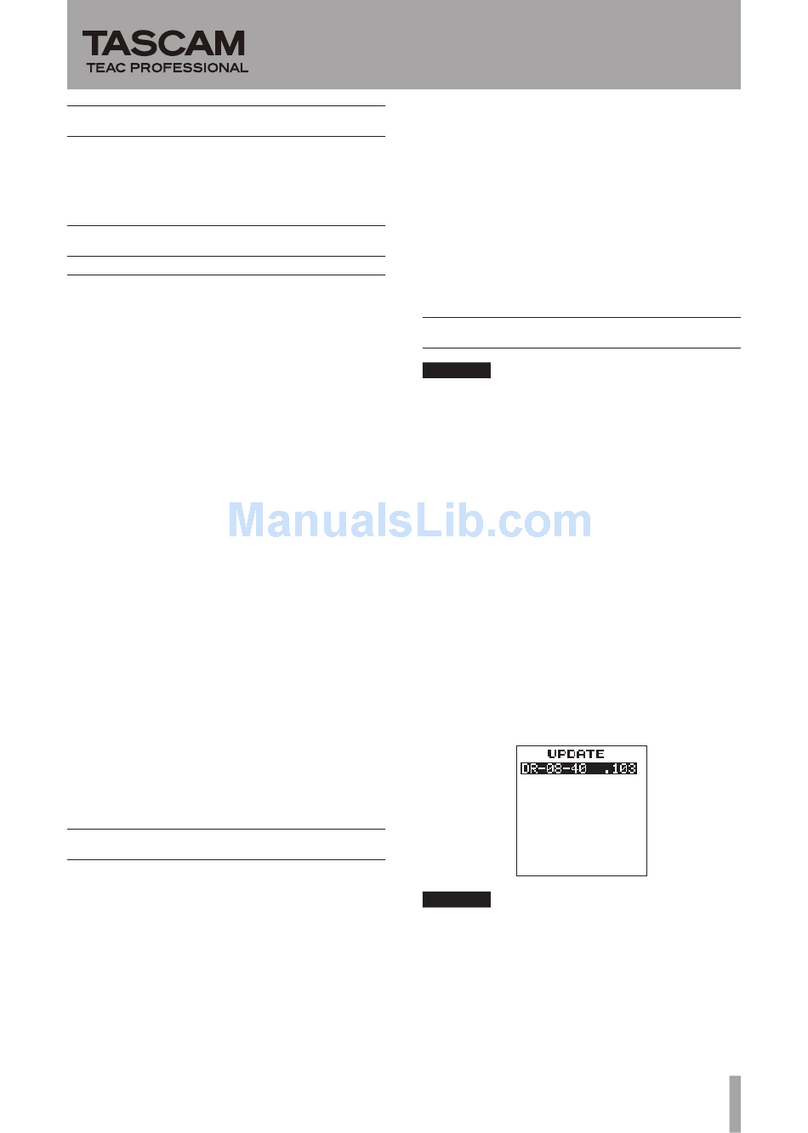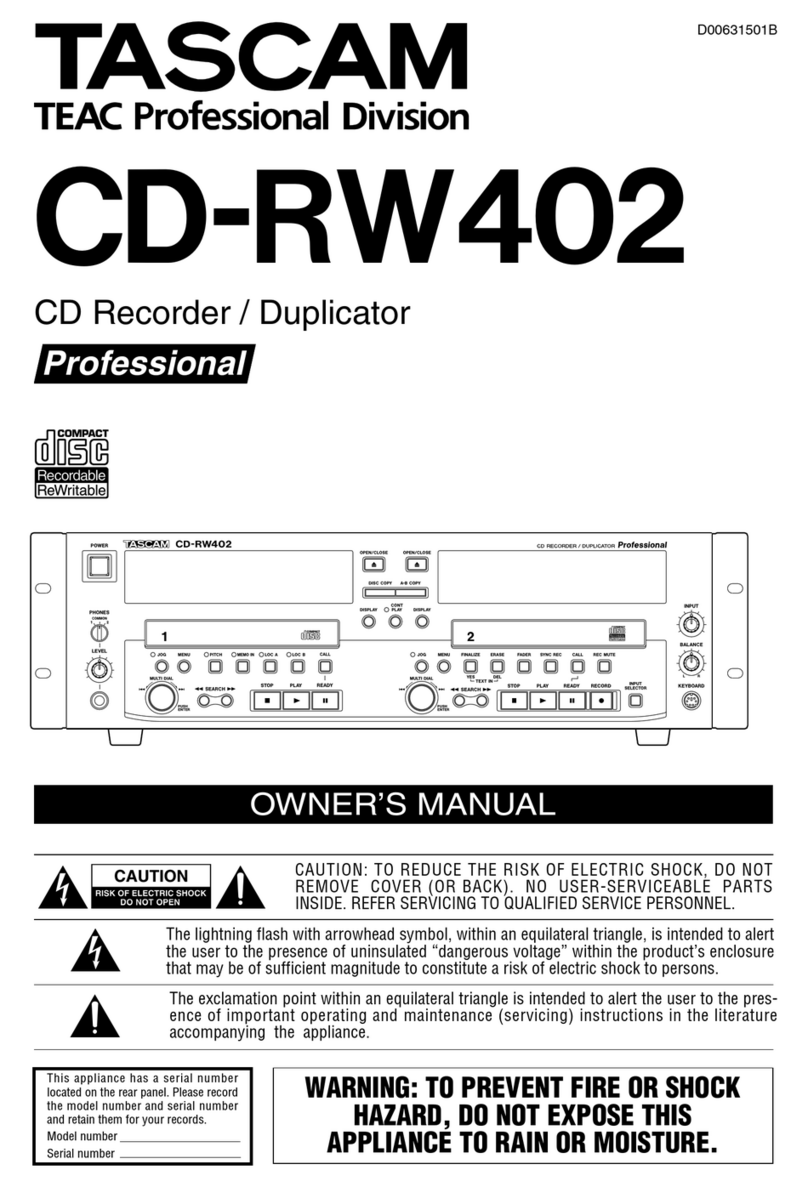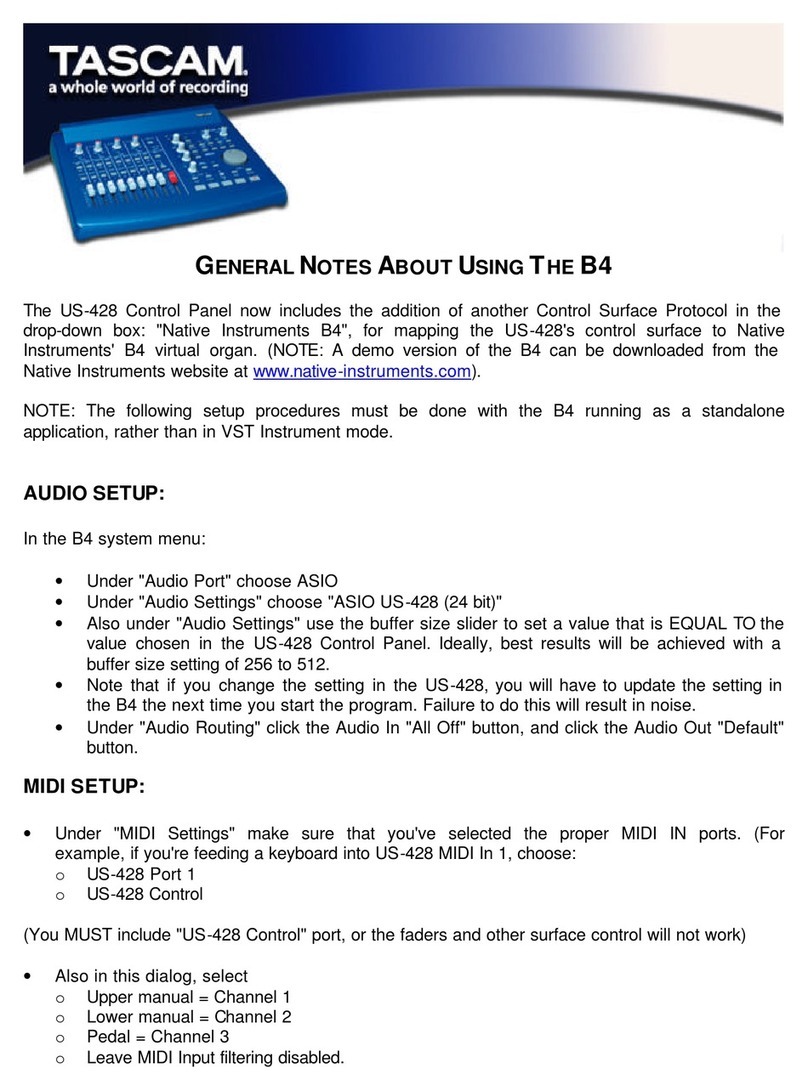
Front panel features
TASCAM 788 Brief Guide 3
8INPUT (A–D) keys and indicators
Control and show the assignment of inputs Athrough
Dto the mixer channels.
9AUX INPUTS key and indicator Con-
trols and shows the assignment of the AUX INPUTS
to the mixer channels.
ATRACK key and indicator Control and
show the assignment of recorded tracks to the mixer
channels and virtual tracks to active tracks.
BSTEREO key and indicator Control and
show the assignment related to the STEREO pair of
channels as well as settings for these channels
CSUB MIX key and indicator Control and
show the assignment of the 788’s internal sub-mixer,
as well as the settings for the sub-mixer.
DEFFECT 2 key and indicator Controls
and shows the settings and assignments of the second
internal effector.
EMONITOR SELECT key and
indicators Controls and show the signals that are
sent from the MONITOR OUT and PHONES jacks.
Shifted, this key allows mono monitoring.
FEJECT/SHUT key and indicator Used
to shut down the 788, and eject removable media,
and to show the status of the shutdown process.
GUNDO [REDO] key Used to control the
undo and redo of recording, editing operations, etc.
HTRACK EDIT key Used to enter the non-
destructive track editing functions (cut, move, etc.).
IMENU [TITLE] Used unshifted to enter the
system menus. Shifted, this key enters titling mode
(songs, library entries, virtual tracks, etc.).
JHOME/ESC key Returns the display to the
“home”screen.
KCUE key and indicator Controls and
shows the replay of the track cue signals from the
MONITOR OUTPUTS and PHONES connectors.
LSELECT keys and indicators Used to
assign inputs to mixer channels, to link channels in
stereo pairs, to select channels for parameter adjust-
ment and soloing, tracks for virtual track assignment,
etc.
MSOLO key and indicator Used to select
and show the status of mixer channels selected for
soloing.
NEQ key Used to bring up the channel equal-
ization adjustment screen.
OLOCATE key Used to recall the list of mem-
ory location points. When shifted, used to input a
memory location point.
PIN, OUT and TO keys Used with three spe-
cial location points for auto punch, repeat playback,
location, and track editing purposes. Unshifted, these
keys locate to the playback points. Shifted, they are
used to set the playback points.
QREC READY keys and indicators Used
to set and display the recording status of the tracks.
RTRACK CUE key Used to bring up the
screen controlling the level and pan of recorded
tracks to the track cue monitoring subsystem.
SSEND key Used to bring up the screens con-
trolling the level, etc. of the channel sends and master
sends to the Aux and Effect send loops.
TFADER/PAN key Used to bring up the
screen controlling pan settings, and providing the
fader view (for use when physical and internal fader
positions do not match).
USHIFT key Used with other keys to provide a
secondary function. When used, the SHIFT key is
always pressed and held down while the other key is
pressed.
VMARK/CHAR [EDIT] (DELETE
[SILENCE], TRIM [COPY TO], INSERT
[MOVE] keys Used unshifted to insert/delete
characters in titles, add/remove selections from lists,
and to enter/edit/remove location memories. Used
shifted as short cuts to commonly-used track editing
functions.
WJOG/DATA dial Used to adjust the playback
position (in jog mode) and to edit parameter data.
XChannel faders Used to adjust the output
level from the channels (channels 7 and 8 are always
linked together). The 0fader setting represents the
nominal level.
YSTEREO fader Used to adjust the level of
the stereo mixed signals from the STEREO
OUTPUTs and from the DIGITAL OUTPUT. The 0
fader setting represents the nominal level.
ZAUTO PUNCH key and indicator Used
to set and display the current auto punch status when
punching new material into previously-recorded
material.
aRHSL key and indicator Used to set and
display the status of the rehearsal facility used in
recording (including auto punch modes).
